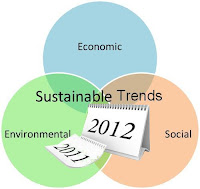The Greenhouse Gas Protocol (GHG Protocol) is the most widely used international accounting tool for government and business leaders to understand, quantify, and manage greenhouse gas emissions. A decade-long partnership between the World Resources Institute (WRI) and the World Business Council for Sustainable Development (WBCSD), the GHG Protocol is working with businesses, governments, and environmental groups around the world to build a new generation of credible and effective programs for tackling climate change. It serves as the foundation for nearly every GHG standard and program in the world - from the International Standards Organization to The Climate Registry - as well as hundreds of GHG inventories prepared by individual companies.
The GHG Protocol also offers developing countries an internationally accepted management tool to help their businesses to compete in the global marketplace and their governments to make informed decisions about climate change.
The Corporate Value Chain (Scope 3) Standard allows companies to assess their entire value chain emissions impact and identify the most effective ways to reduce emissions. Often, the majority of total corporate emissions come from scope 3 sources, which means many companies have been missing out on significant opportunities for improvement.
The Corporate Value Chain Standard has been created through a broad, inclusive, multi-stakeholder process. Over a three year period 2,300 participants were involved from 55 countries; 96 members participated in technical working groups to draft the standard, and 34 companies from various industries road tested the standard in 2010.
The new standards provide a methodology that can be used to account for and report emissions from companies of all sectors, globally. They are accompanied by user-friendly guidance and tools developed by the GHG Protocol.
Click here to download (E-Reader Version (PDF), 154 pages, 7.0 Mb)
© 2012, Richard Matthews. All rights reserved.
Related Post
PUMA's Comprehensive Sustainable Strategy Now Includes Environmental Accounting
The GHG Protocol also offers developing countries an internationally accepted management tool to help their businesses to compete in the global marketplace and their governments to make informed decisions about climate change.
The Corporate Value Chain (Scope 3) Standard allows companies to assess their entire value chain emissions impact and identify the most effective ways to reduce emissions. Often, the majority of total corporate emissions come from scope 3 sources, which means many companies have been missing out on significant opportunities for improvement.
“The new Corporate Value Chain Standard provides a much needed harmonized global methodology for businesses to measure value chain greenhouse gas emissions. Our road test of the new Scope 3 standard provides us with key data to drive our strategic business decisions regarding greenhouse gas reductions. We encourage other businesses to similarly employ this effective method to measure, and subsequently address, greenhouse gas emissions from the entire value chain."
- Kelly Semrau, Senior Vice President of Global Corporate Affairs, Communication and Sustainability, S.C. Johnson
“Our work with the GHG Protocol was instrumental in guiding our first efforts towards environmental footprinting. In 2010 Kraft Foods participated in the GHG Protocol Corporate Value Chain (Scope 3) Standard ‘road test’. Our Scope 3 inventory results are the backbone that informed our future footprint work. For GHG Protocol, the feedback from Kraft Foods informed the final Scope 3 standard WRI will be launching around the world this October.”Users of the new standard can now account for emissions from 15 categories of scope 3 activities, both upstream and downstream of their operations. The scope 3 framework also supports strategies to partner with suppliers and customers to address climate impacts throughout the value chain.
- Dan Pettit, Associate Director of Sustainability for Research Development & Quality at Kraft Foods
The Corporate Value Chain Standard has been created through a broad, inclusive, multi-stakeholder process. Over a three year period 2,300 participants were involved from 55 countries; 96 members participated in technical working groups to draft the standard, and 34 companies from various industries road tested the standard in 2010.
The new standards provide a methodology that can be used to account for and report emissions from companies of all sectors, globally. They are accompanied by user-friendly guidance and tools developed by the GHG Protocol.
“We believe that by adopting the same standards, we can move ahead faster with confidence to tackle product emissions. CGF represents more than 400 members in the Consumer Goods Sector with annual sales of more than $3 trillion.”Click here to download GHG Protocol (Print Version (PDF), 149 pages, 7.3 Mb)
- Jeff Rice, Director Sustainability Walmart, Co-leading the Consumer Goods Forum work
Click here to download (E-Reader Version (PDF), 154 pages, 7.0 Mb)
© 2012, Richard Matthews. All rights reserved.
Related Post
PUMA's Comprehensive Sustainable Strategy Now Includes Environmental Accounting



















